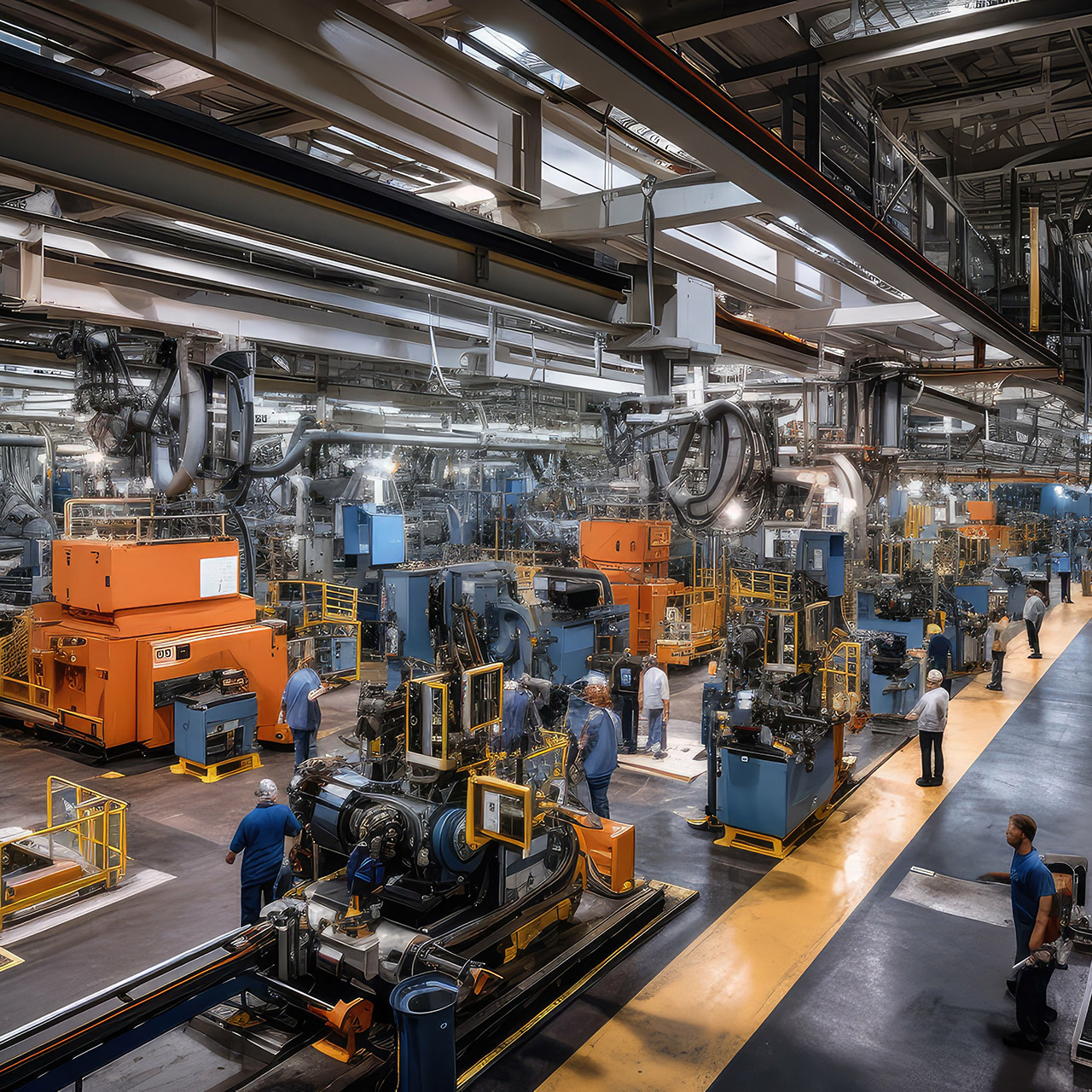Manufacturing companies have long faced the production challenge of balancing the goals of reducing costs, improving efficiency, and maintaining high quality. Conventional wisdom suggests that achieving all three is almost impossible. Most manufacturers have to pick two: if they want speed and quality, it comes at a high cost; if they want low cost and speed, quality suffers.
But what if this trade-off wasn’t necessary? The rise of AI, advanced analytics, and automation has changed how manufacturers approach production. These technologies can cut production inefficiencies, optimize workflows, and uncover opportunities for innovation.
The Cost-Quality-Speed Conundrum
Balancing cost, quality, and efficiency has always been a tightrope walk. For decades, manufacturers relied on legacy knowledge to make this balancing act work. For example, long-time workers may be highly attuned to potential machine issues due to familiarity with equipment sounds and vibrations. While this exemplifies the importance of human intuition, it also highlights a key challenge—relying solely on legacy knowledge can limit your scalability and consistency.
Today, manufacturers can use technologies to replicate and enhance this human experience. Tools like AI analyze massive amounts of data in real-time to predict problems before they occur, offering solutions that enhance quality and keep costs in check.
AI and advanced analytics excel at finding inefficiencies and opportunities for improvement that might be invisible to even the most experienced workers.
For example, AI can:
- Optimize production schedules: Advanced analytics tools can assess production workflows and identify bottlenecks, enabling manufacturers to optimize schedules and resource allocation without compromising quality.
- Enhance quality control: AI-powered systems can analyze images and data to detect defects faster and more accurately than human inspectors. For example, operators can adjust if a defect is detected early, preventing further defects. It proactively reduces the likelihood of rework and reruns and saves time and resources.
- Predict equipment failures: Machine sensors collect data about vibrations, temperature, and other metrics. AI analyzes this data to predict when equipment might fail, providing a window for maintenance.
- Lower labor costs. Automation and AI help mitigate labor costs without sacrificing quality or efficiency. For example, AI can handle routine tasks like inventory tracking, while automated systems take over repetitive production tasks.
The Role of Overall Equipment Effectiveness (OEE)
A critical metric for manufacturers is Overall Equipment Effectiveness (OEE), which measures how well manufacturing assets are being used relative to their full potential. OEE combines three components: availability, performance and quality. A high OEE score indicates that equipment runs at peak productivity with minimal downtime. It can help a manufacturer find bottlenecks, prioritize issues and reduce waste.
AI plays a pivotal role in improving OEE. Take preventative maintenance as an example. Rather than waiting for a machine to break down and cause unplanned downtime, manufacturers can use AI-powered predictive maintenance to address issues before they escalate. This feature reduces downtime and improves performance. There is a corresponding impact on efficiency and product quality.
Benefits of AI-Powered Operations
By embracing AI, automation and advanced analytics, manufacturers can achieve benefits across the board:
- Reduced downtime: Predictive maintenance ensures machines run smoothly, minimizing disruptions to line production environments.
- Improved quality: Advanced quality control systems catch defects early, reducing rework and ensuring consistent standards.
- Lower costs: Automation reduces labor and material costs, while analytics optimize resource allocation.
- Faster production: Streamlined workflows and real-time reporting eliminate bottlenecks and increase production efficiency.
- Reallocated resources: Automation frees workers for more complex and value-added tasks. We’ve seen some manufacturing companies shift administrative tasks to automated systems, which allows their skilled workforce more time to focus on optimizing production flows and solving other shop-floor issues.
These benefits create a competitive advantage, enabling manufacturers to meet customer demands while controlling costs and maintaining high quality.
Yes, Manufacturers Can Have It All
Microsoft Dynamics 365 Finance and Supply Chain Management is a powerful tool that integrates AI, automation and advanced analytics into manufacturing production operations. The platform helps manufacturers balance cost, efficiency and quality by providing:
- Real-time data insights: Access real-time data on production performance, enabling quick decision-making and proactive problem-solving.
- Predictive maintenance: Analyze equipment data to predict potential failures, reducing downtime.
- Integrated quality control: Ensure that products meet high standards without slowing production.
- Streamlined reporting: Replace outdated paper-based systems, reducing errors and improving visibility into production processes.
The idea that manufacturers must choose between cost, efficiency, and quality is out of date. The future of manufacturing production is here, and it’s time to embrace it—and Sikich can help. Sikich empowers manufacturers to modernize their operations with Microsoft’s advanced solutions. Talk with our team today to find out more.
This publication contains general information only and Sikich is not, by means of this publication, rendering accounting, business, financial, investment, legal, tax, or any other professional advice or services. This publication is not a substitute for such professional advice or services, nor should you use it as a basis for any decision, action or omission that may affect you or your business. Before making any decision, taking any action or omitting an action that may affect you or your business, you should consult a qualified professional advisor. In addition, this publication may contain certain content generated by an artificial intelligence (AI) language model. You acknowledge that Sikich shall not be responsible for any loss sustained by you or any person who relies on this publication.








